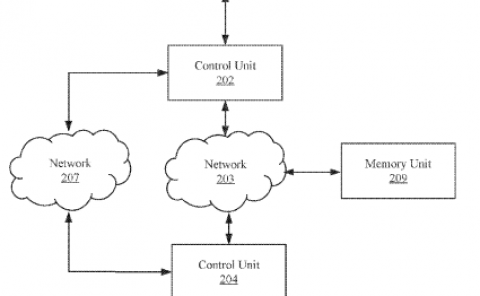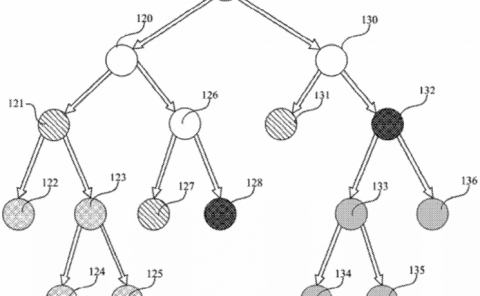Facebook Patent | Display panel calibration using detector array measurement
Patent: Display panel calibration using detector array measurement
Publication Number: 10198984
Publication Date: 2019-02-05
Applicants: Facebook

Abstract:
A system calibrates luminance of an electronic display panel. The system includes a luminance detection device, an actuator and a computing device. The luminance detection device comprises a plurality of detectors arranged along a width or length of the electronic display panel to simultaneously measure luminance parameters of at least one row or column of areas in the electronic display panel. Each of the plurality of detectors covers an area in the at least one row or column of the electronic display panel. The actuator is configured to cause a relative translational movement in a length direction or a width direction of the electronic display panel. The computing device is coupled to the luminance detection device to receive the measured luminance parameters, and the computing device is configured to generate calibration data for adjusting brightness of areas of the electronic display panel by processing the measured luminance parameters.
Background:
The present disclosure generally relates to display panels, and specifically to calibrating brightness and colors in such display panels using detector array measurement.
An electronic display panel includes pixels that display a portion of an image by emitting one or more wavelengths of light from various sub-pixels. When input indicating the same brightness across all pixels is received, the electronic display panel should display the same luminance across its entire surface. However, various variances during the manufacturing process cause non-uniformities in luminance of pixels and sub-pixels. For example, variations in flatness of a carrier substrate, variations in a lithography light source, temperature variations across the substrate, or mask defects may result in the electronic display panel having transistors with non-uniform emission characteristics.
As a result, different sub-pixels driven with the same voltage and current will emit different intensities of light (also referred to as brightness). In another example, “Mura” artifact or other permanent artifact causes static or time-dependent non-uniformity distortion in the electronic display panel, due to undesirable electrical variations (e.g., differential bias voltage or voltage perturbation). Variations that are a function of position on the electronic display panel cause different display regions of the electronic display panel to have different luminance. If these errors systematically affect sub-pixels of one color more than sub-pixels of another color, then the electronic display panel has non-uniform color balance as well.
These spatial non-uniformities of brightness and colors decrease image quality and limit applications of the electronic display panels. For example, virtual reality (VR) systems typically include an electronic display panel that presents virtual reality images. These spatial non-uniformities degrade user experience and immersion in a VR environment.
Summary:
A system calibrates luminance parameters of an electronic display panel using detector array measurements. The system may calibrate luminance parameters of the electronic display panel by causing a relative translational movement in a length direction or a width direction of the electronic display panel in a rolling manner.
In some embodiments, the system includes a luminance detection device, an actuator and a computing device. The luminance detection device may include a plurality of detectors arranged along a width or length of the electronic display panel to simultaneously measure luminance parameters of at least one row or column of areas in the electronic display panel. Each of the plurality of detectors covers an area in the at least one row or column of the electronic display panel. The actuator causes a relative translational movement in a length direction or a width direction of the electronic display panel. The computing device is coupled to the luminance detection device to receive the measured luminance parameters, and the computing device generates calibration data for adjusting brightness of areas of the electronic display panel by processing the measured luminance parameters.



